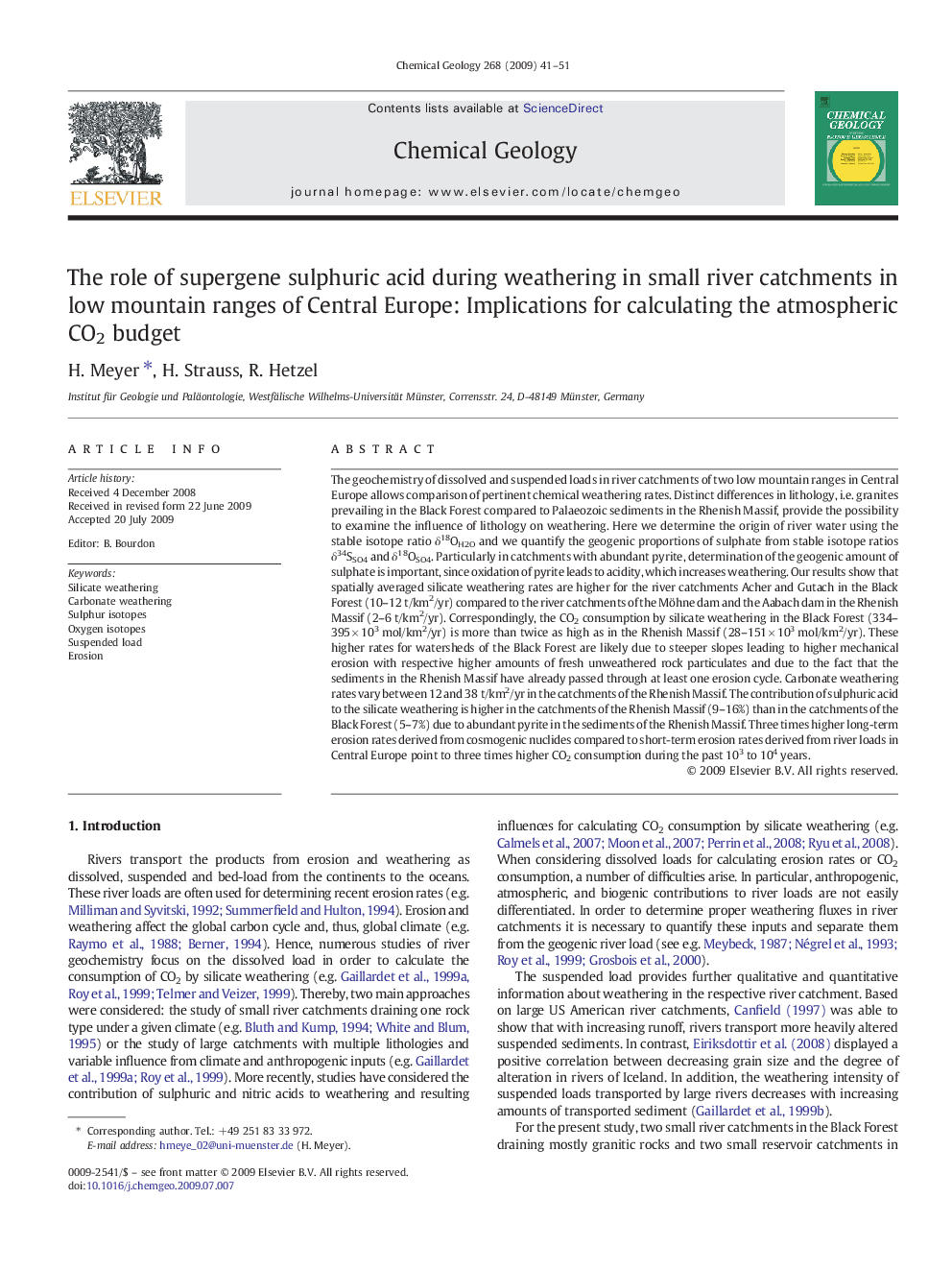| کد مقاله | کد نشریه | سال انتشار | مقاله انگلیسی | نسخه تمام متن |
|---|---|---|---|---|
| 4700261 | 1637698 | 2009 | 11 صفحه PDF | دانلود رایگان |
عنوان انگلیسی مقاله ISI
The role of supergene sulphuric acid during weathering in small river catchments in low mountain ranges of Central Europe: Implications for calculating the atmospheric CO2 budget
دانلود مقاله + سفارش ترجمه
دانلود مقاله ISI انگلیسی
رایگان برای ایرانیان
کلمات کلیدی
موضوعات مرتبط
مهندسی و علوم پایه
علوم زمین و سیارات
ژئوشیمی و پترولوژی
پیش نمایش صفحه اول مقاله

چکیده انگلیسی
The geochemistry of dissolved and suspended loads in river catchments of two low mountain ranges in Central Europe allows comparison of pertinent chemical weathering rates. Distinct differences in lithology, i.e. granites prevailing in the Black Forest compared to Palaeozoic sediments in the Rhenish Massif, provide the possibility to examine the influence of lithology on weathering. Here we determine the origin of river water using the stable isotope ratio δ18OH2O and we quantify the geogenic proportions of sulphate from stable isotope ratios δ34SSO4 and δ18OSO4. Particularly in catchments with abundant pyrite, determination of the geogenic amount of sulphate is important, since oxidation of pyrite leads to acidity, which increases weathering. Our results show that spatially averaged silicate weathering rates are higher for the river catchments Acher and Gutach in the Black Forest (10-12 t/km2/yr) compared to the river catchments of the Möhne dam and the Aabach dam in the Rhenish Massif (2-6 t/km2/yr). Correspondingly, the CO2 consumption by silicate weathering in the Black Forest (334-395 Ã 103 mol/km2/yr) is more than twice as high as in the Rhenish Massif (28-151 Ã 103 mol/km2/yr). These higher rates for watersheds of the Black Forest are likely due to steeper slopes leading to higher mechanical erosion with respective higher amounts of fresh unweathered rock particulates and due to the fact that the sediments in the Rhenish Massif have already passed through at least one erosion cycle. Carbonate weathering rates vary between 12 and 38 t/km2/yr in the catchments of the Rhenish Massif. The contribution of sulphuric acid to the silicate weathering is higher in the catchments of the Rhenish Massif (9-16%) than in the catchments of the Black Forest (5-7%) due to abundant pyrite in the sediments of the Rhenish Massif. Three times higher long-term erosion rates derived from cosmogenic nuclides compared to short-term erosion rates derived from river loads in Central Europe point to three times higher CO2 consumption during the past 103 to 104 years.
ناشر
Database: Elsevier - ScienceDirect (ساینس دایرکت)
Journal: Chemical Geology - Volume 268, Issues 1â2, 20 October 2009, Pages 41-51
Journal: Chemical Geology - Volume 268, Issues 1â2, 20 October 2009, Pages 41-51
نویسندگان
H. Meyer, H. Strauss, R. Hetzel,